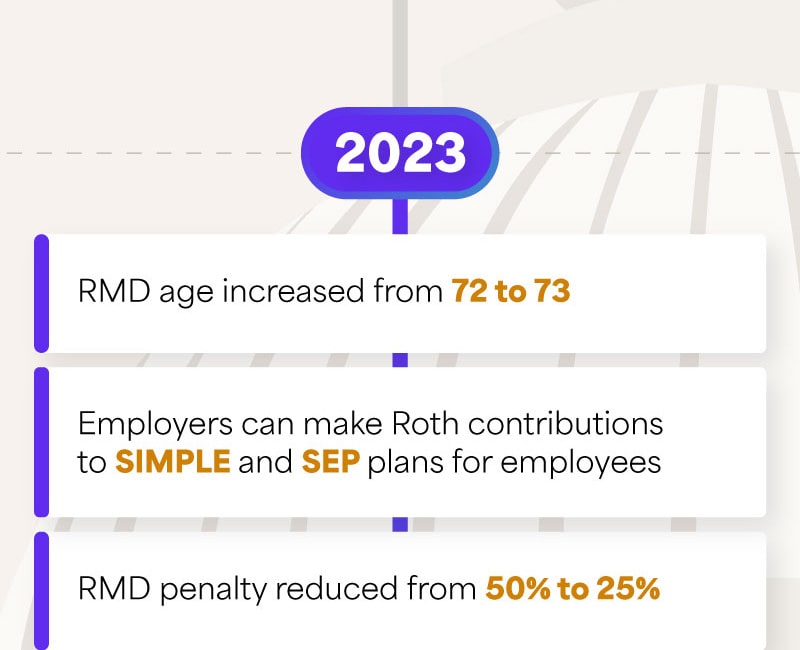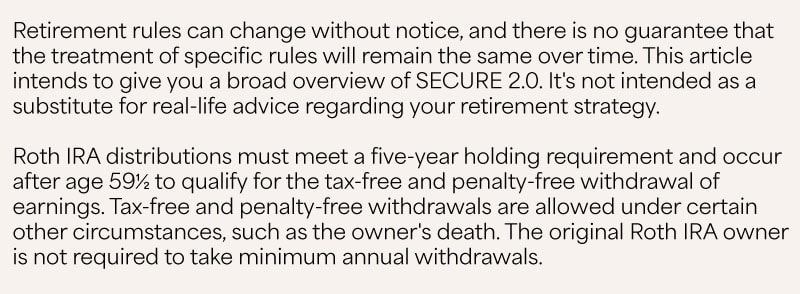Check the background of your financial professional on FINRA's BrokerCheck.
The content is developed from sources believed to be providing accurate information.
The information in this material is not intended as tax or legal advice. Please consult legal or tax professionals
for specific information regarding your individual situation. Some of this material was developed and produced by
FMG Suite to provide information on a topic that may be of interest. FMG Suite is not affiliated with the named
representative, broker - dealer, state - or SEC - registered investment advisory firm. The opinions expressed and
material provided are for general information, and should not be considered a solicitation for the purchase or
sale of any security.
We take protecting your data and privacy very seriously. As of January 1, 2020 the California Consumer Privacy Act (CCPA) suggests the following link as an extra measure to safeguard your data: Do not sell my personal information.
Copyright 2025 FMG Suite.
Lincoln Investment and Capital Analysts Form CRS
Capital Analysts of Jacksonville is a locally-owned, independent full-service fee based firm with financial advisors that offer financial planning, wealth management, retirement planning, estate planning, insurance planning, charity planning, risk management, and executive benefits. Capital Analysts of Jacksonville is located in Jacksonville, Florida and proudly serves clients throughout Northeast Florida and Southern Georgia including, Jacksonville, Jacksonville Beach, Neptune Beach, Atlantic Beach, Ponte Vedra Beach, St. Augustine, Orange Park, Amelia Island, Fernandina Beach. Waycross, Hinesville, and Douglas.
We make no representation as to the completeness or accuracy of information provided at any third-party site. Nor are we liable for any direct or indirect technical or system issues or consequences arising out of your access to or use of third-party sites. When you access one of these sites, you are leaving our website and assume total responsibility for your use of the sites you are visiting.
IMPORTANT INFORMATION: This site has been prepared solely for information purposes and is not intended to be a solicitation, offer or sale of securities products or investment advisory services to anyone who resides outside of the United States.
Capital Analysts and Lincoln Investment are registered as investment advisers with the U.S. Securities and Exchange Commission and Lincoln Investment is registered as a broker/dealer in all 50 states.
Capital Analysts and Lincoln Investment and its Financial Representatives may only transact business in a particular state if first registered and only after complying with registration requirements.
Advisory services offered through Capital Analysts or Lincoln Investment, Registered Investment Advisers.
Securities offered through Lincoln Investment, Broker/Dealer, Member FINRA/SIPC. www.lincolninvestment.com
Capital Analysts of Jacksonville, Florida, Inc. and the above firms are independent and non-affiliated.
Tax, legal, or Social Security claiming advice is not offered through, nor supervised by Lincoln Investment or Capital Analysts.
For more information - FINRA BrokerCheck (//brokercheck.finra.org)
Calculators are provided only as general self-help planning tools. Results depend on many factors, including the assumptions you provide and may vary with each use and over time. We do not guarantee their accuracy, or applicability to your circumstances.






































